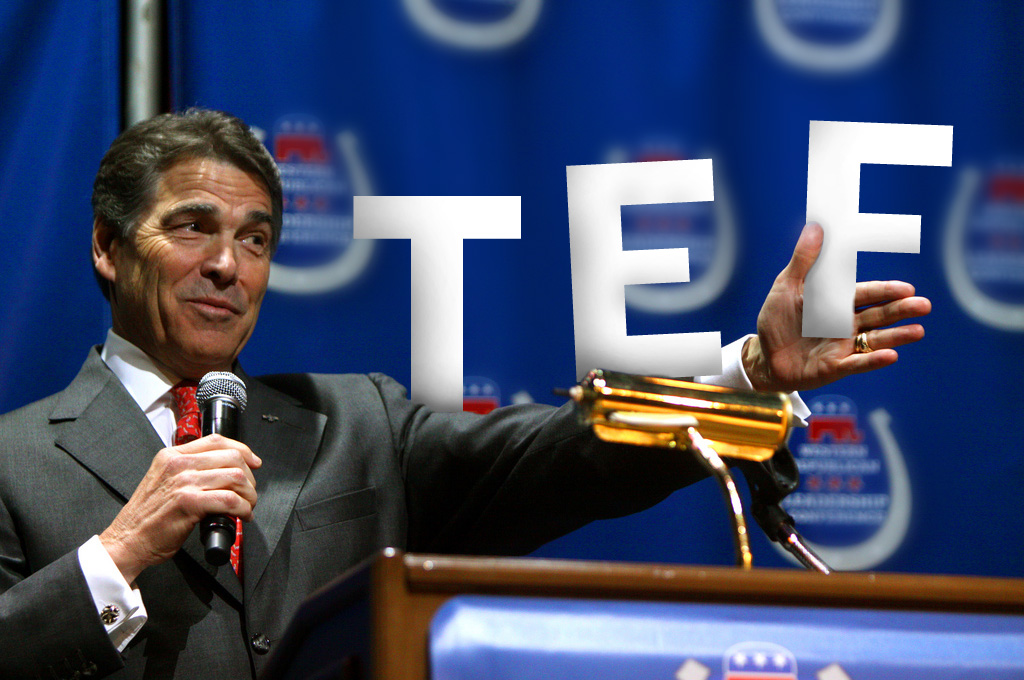
As Gov. Rick Perry pushes his job creation initiatives on the presidential campaign trail, he often touts the Texas Enterprise Fund, an economic development program that the governor’s office says is bringing 59,000 jobs and $14.7 billion in capital investment to Texas.
But Perry’s opponents say the fund’s contributions to the Texas economy have been far overstated. And a national nonprofit has said the Enterprise Fund lacks the accountability measures to ensure it is creating quality jobs.
Perry helped create the program in 2003 with the goal of luring new companies to Texas by providing grants. Companies undergo an 11-step “due diligence” process before a contract is signed, and the governor, lieutenant governor and speaker of the Texas House must all approve, said Lucy Nashed, a spokeswoman for Perry.
The contracts require companies to meet job-creation milestones each year and maintain those jobs for an extended period of time. The governor’s office said companies that are subsidized through the fund created or maintained a combined 33,460 new jobs in 2010. Although 28 companies failed to meet their job targets, and at least four of those contracts were terminated, 25 reported a job surplus, which led to a total of 9,795 more jobs than the contracts required.
But Craig McDonald, the executive director of Texans for Public Justice, which tracks money and political influence in Texas politics, said the job growth cited by the governor’s office is misleading. A report released by McDonald’s group last month said that amendments to recipients’ state contracts, lowering targets or postponing deadlines, “undercut the job promises.”
While some companies whose contracts were amended were able to meet their revised targets, others still fell short. Of the 15 Enterprise Fund companies with amended contracts that filed compliance reports with the governor’s office in 2010, eight did not meet their new job targets. Combined, the 15 companies fell 941 jobs short of their amended projection.
Nashed said that it was impossible to predict a business cycle and that the ability to amend contracts benefits companies and taxpayers. Under the revised contract terms, the state can “require the company to have to maintain those jobs longer than they would have before,” Nashed said. She also said the contracts allow the state to reclaim money if companies do not meet their obligations.
So far, companies with amended contracts have repaid $7.7 million to the state — a little more than 11 percent of the funds disbursed — for failing to meet job targets on time. Perry’s office has also reclaimed $16 million from 11 companies whose contracts were terminated, or just over half of the funds originally disbursed to those companies.
The nonprofit Good Jobs First released a report this month comparing 238 job creation programs across the country. Although the Texas Economic Development Act, an incentive program managed by the state comptroller, received a perfect score, the Texas Enterprise Fund received low marks.
Thomas Cafcas, the report’s co-author, said the Enterprise Fund lacks uniform accountability measures — like market-based wage and health care requirements — that would ensure the program creates quality jobs. Implementing consistent standards would also guarantee “there are no backroom dealings that change the rules” midcontract, Cafcas said.
Ray Perryman, a Texas economist, said incentive programs are always controversial. He said the Enterprise Fund has been largely effective at luring businesses to Texas, so it is appropriate for Perry to “receive recognition for its success.”
Search through the following documents to find the original, amended and termination contracts for Texas Enterprise Fund recipients.
The documents below were filed with the governor's office by Texas Enterprise Fund recipients who were required to comply with job targets in 2010. They contain job counts, job descriptions with salary information, and sometimes even investment information or news articles about projects completed with the funds. Search by company name to find the related documents.
